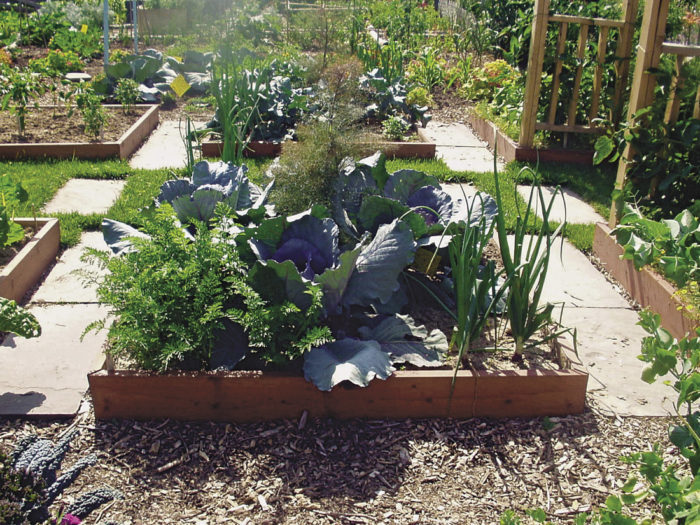
While in general, our experts do not recommend square foot gardening, there are some redeeming qualities to this method. Learn the basics of square foot gardening as well as some of the benefits of using this method, and judge for yourself whether it is the system for you.
• It raises awareness. No one can deny that square foot gardening has gotten a lot of people to think about growing some of their own food. This might also lead to a better understanding of what farmers have to go through to raise the vegetables that folks buy at the store and why veggies might cost as much as they do.
• It is approachable for beginners. The SFG steps are easy to follow: You build a small-scale version of a raised bed, purchase the recommended products and soil amendments, and place plants close together to reduce weeding.
• It encourages building raised beds. Elevated boxes are generally good for drainage and aeration. Growing in the ground, in a more traditional sense, requires turning over the soil (in the lawn area or elsewhere) to make it ready for planting; that can be physically taxing, especially if the sod is thick, the soil is full of clay, or the ground is compacted. Additionally, raised beds can be attractive.
• It advocates record-keeping. The SFG method asks folks to take gardening notes. This is crucial for correcting issues in subsequent seasons (perhaps you watered those lettuce seedlings too much and they rotted) or for remembering what things worked well (you put tomatoes at the back of a bed to enable easier trellising).
Principles of Square Foot Gardening
1. Arrange your garden in squares, not rows. Lay it out in basic sections that are 4 feet long and 4 feet wide.
2. Construct wooden raised beds approximately 6 inches deep to hold the soil mix.
3. Space the beds 3 feet apart to form walking paths.
4. Fill the boxes with a special soil mix: one-third compost, one-third peat moss, and one-third coarse vermiculite.
5. Build a square foot grid for the top of the frame.
6. Plant a different flower, vegetable, or herb crop in each square foot box using one, two, nine, or 16 plants per square foot (based on each plant’s mature size).
7. Tend your garden by reaching in from the sides. Never walk on your garden soil.
8. Conserve seeds by planting only two or three seeds per hole.
9. Water by hand from a bucket of sun-warmed water.
10. Harvest a square, then add compost and replant it with a different crop.


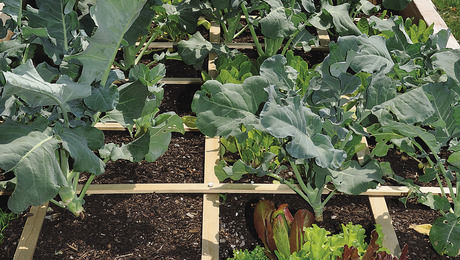
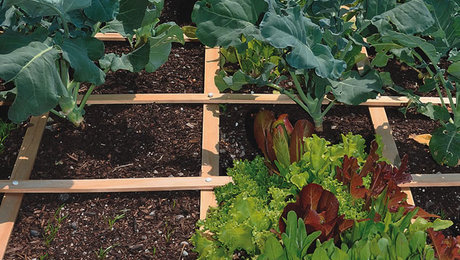
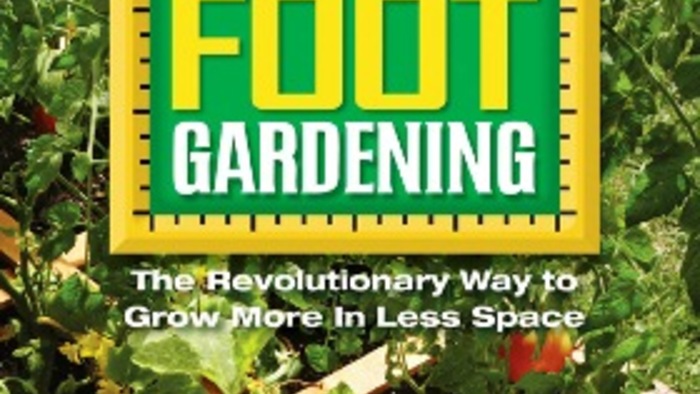
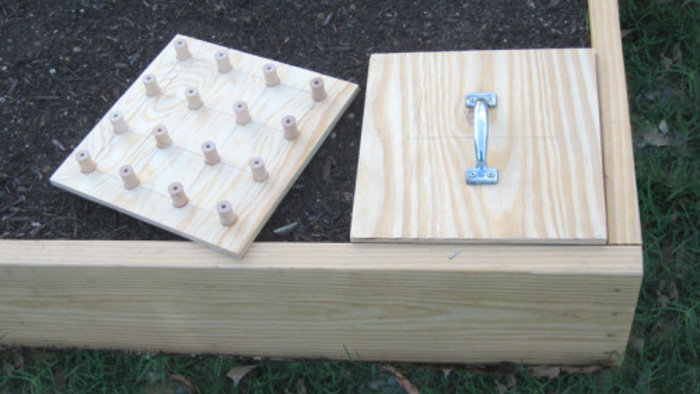












Comments
Log in or create an account to post a comment.
Sign up Log in